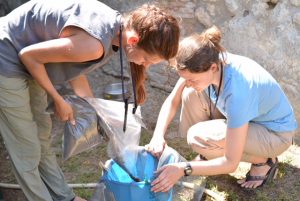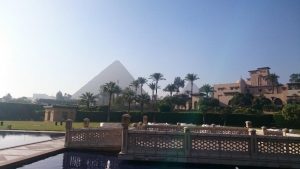(By Naomi Miller, third-year undergraduate in the Department of Classics)
Those who live on the island of Chios will tell you that is the island where Homer was born, lived, and composed the legendary epics. Whilst this in itself may be highly debated among the Classical field, it is easy to be blown away by the landscape – sitting in the hills, overlooking the Aegean Sea, you can easily feel the magic and inspiration that could have inspired such great works.
I was lucky enough to be able to spend some time in Chios over the Summer and had plenty of opportunities to see the island for myself. If you get the opportunity to visit it, there are several sites to visit (for both the Homer and non-Homer fans!):
The south of Chios is the only area of the world in which mastic is produced. Surrounded by the fields that farm these trees are many picturesque medieval villages. Pyrgi is one of them, known famously as the painted village. Almost every house in the village is covered in carved with geometric designs, and it is a beautiful place to enjoy a cold coffee and spend an afternoon wandering around.


Another site worth visiting is perhaps the largest archaeological site in Chios, part of it believed to be a Mycenaean settlement. Interestingly, the Temple of Athena is argued by some academics to be similar to that of a temple described in Iliad, perhaps further adding to the idea that Homer actually lived on Chios and was inspired by what he saw there. Certainly, the views from the top of the settlement could inspire any poet.


Finally, the site of Daskalopetra, otherwise known as Teacher’s Rock, the rumoured site where Homer sat and composed the Iliad and Odyssey. Although it is now believed to be a temple dedicated to Cybele, it is definitely still a cult site for those who adore the works of Homer. Over the years it has played host to many readings of the epic poems, and dramas in Ancient Greek still are performed in the summer. And if this isn’t enough to interest you, then the Homer Taverna next to the site does wonderful mezze dishes!
I feel very privileged to have had the chance to explore Chios, meet the incredibly hospitable people, and bask in the Homeric world. Whilst I was there I not only was able to further my own learning and understanding for my own research and dissertation, but also learn a great deal about what Homer means to the modern Chians, and experience Greek xenia for myself.

(All photos by the author.)






